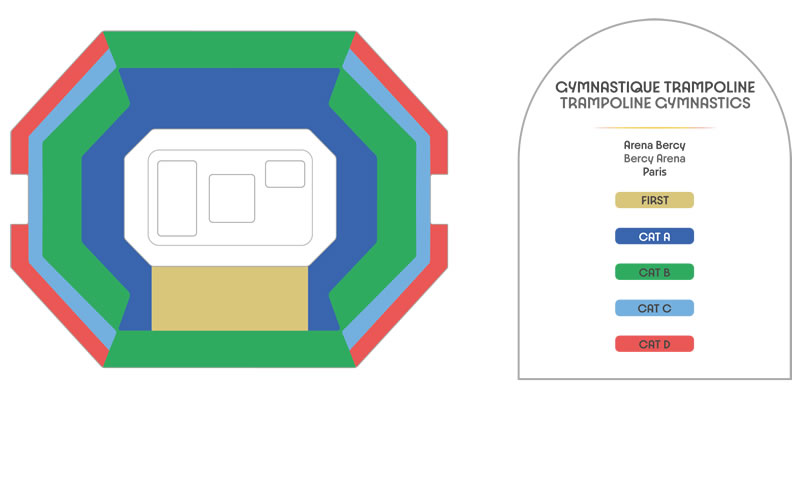GTR02 M - Qualification, final - Summer Olympics - Paris Olympic 2024 Olympic Trampoline Gymnastics Tickets

Bercy Arena - Trampoline Gymnastics
Olympic Trampoline Gymnastics
Olympic Trampoline Gymnastics is a captivating and high-flying discipline that combines acrobatics, precision, and athleticism. As part of the gymnastics family, trampoline offers a unique spectacle where athletes perform a series of aerial skills while bouncing on a large, taut trampoline. The sport tests not only physical strength and coordination but also courage and spatial awareness.
In Olympic competition, athletes perform routines consisting of ten consecutive skills, including twists, somersaults, and combinations that showcase both difficulty and execution. Each routine is carefully choreographed to maximize height, complexity, and fluidity, pushing the boundaries of what can be achieved in mid-air. The objective is to impress judges with the difficulty of skills, flawless form, and control throughout the routine.
Competitors perform in both men’s and women’s individual events. Each athlete typically completes two routines: a qualification round and a final. Scores are awarded based on difficulty, execution, and time of flight—the amount of time the gymnast spends in the air. The highest combined scores determine which athletes advance and ultimately win medals.
Trampoline gymnastics requires intense physical conditioning. Athletes must develop strong core and leg muscles to generate height and control while maintaining perfect body alignment to avoid deductions. Mental focus and timing are crucial, as even a slight error in positioning can affect balance and landing safety.
Since its introduction to the Olympics, trampoline gymnastics has gained popularity for its thrilling and dynamic performances. The sport showcases the blend of athleticism and artistry, as gymnasts soar to impressive heights and execute gravity-defying maneuvers with elegance.
Countries such as China, Russia, and Canada have been strong contenders in Olympic trampoline gymnastics, consistently producing world-class athletes who compete at the highest level. Their success reflects the growing global interest and development of this exciting sport.
Overall, Olympic Trampoline Gymnastics offers a breathtaking display of skill, control, and courage. It inspires audiences with its unique combination of power and grace, making it a standout event in the gymnastics category and a highlight of the Olympic Games.
